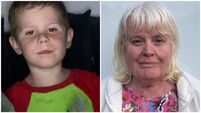Guru behind Tokyo tube poisoning awaits court verdict
The doomsday cult guru accused of ordering the 1995 nerve gas attack on the Tokyo tube network and a string of other killings was awaiting a verdict today in a court session that began with the judge rejecting his claims of innocence.
A conviction and death sentence were widely expected against Shoko Asahara, the nearly-blind, bearded cult leader who is charged with murdering a total of 27 people and ordering followers to produce chemical weapons including sarin nerve gas.














